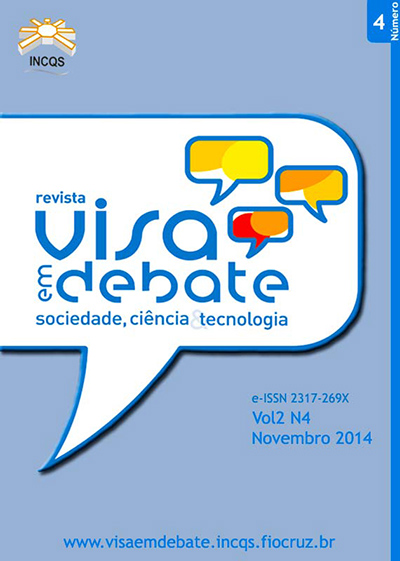Health surveillance and the right to communication: Food labeling as a part of citizenship
DOI:
https://doi.org/10.3395/vd.v2n4.440Keywords:
Health Surveillance, Communication and Health, Food Labeling, Consumer RightsAbstract
This article is based on a doctoral thesis that sought to understand the communicative process established within the framework of health surveillance, emphasizing the perspective of the citizen’s right to information and communication and taking food labeling as an empirical object. Thus, the study investigated the three segments with some degree of involvement in defining, implementing, and monitoring public policies on labeling, the public, the production sector, and organized civil society, as well as the academic sector, due to its contribution in the context of scientific studies. Based on the confluences and divergences, it proposed a system of communication regarding labeling that best ensures the citizen’s right to information and communication without disregarding the interests involved. It is a qualitative health study, following the case study method. For the research problem and data analysis, the main theoretical framework employed was the social production of meanings, particularly the conceptual framework that considers communication as a symbolic market. Some of the obtained results indicated that the communicative practice cannot satisfactorily meet the citizen’s demands, that market values override the right to information and communication, and that when faced with demands of risk the sectors seek immediate solutions. There also exist intrasectoral and intersectoral conflicts that disturb the communicative flow and hinder guaranteeing the citizen’s right, such as failures in regulatory applicability by the productive sector and strong advertising appeals to the consumer, few partnerships to develop strategies for disseminating information; difficulties in monitoring labeling, and few channels capable of bringing regulatory agencies and academic research together. The proposed system suggests a better definition of the following: the legal responsibilities between the regulatory agencies, an ethical commitment from the sectors, media sensitization for disseminating information to society, expansion of the monitoring of labeling, effective punishment of offenders, and including the number 800 on labels to contact the agency responsible for the standards. The different interests of the various actors involved in the food production system are concentrated and represented on labels.Downloads
Downloads
Additional Files
Published
Issue
Section
License
Copyright (c) 2014 Health Surveillance under Debate: Society, Science & Technology (Vigilância Sanitária em Debate: Sociedade, Ciência & Tecnología) – “Visa em Debate”

This work is licensed under a Creative Commons Attribution-NonCommercial-NoDerivatives 4.0 International License.
COPYRIGHT ALLOWANCE The author (s) hereinafter designated as the ASSIGNOR hereby assign and transfer, free of charge, the ownership of the copyrights related to this ARTICLE to the Vigilância Sanitária em Debate: Sociedade, Ciência & Tecnologia (Health Surveillance under Debate: Society, Science & Technology) – Visa em Debate, represented by FUNDAÇÃO OSWALDO CRUZ, established at Av. Brasil, nº 4365, Manguinhos, Rio de Janeiro, RJ, Brazil, CEP 21045-900, under the conditions set out below: (a) The terms and conditions set forth in this Agreement shall apply to the following: 1. The ASSIGNOR declares that they s(he) is (are) the author (s) and owner (s) of the copyrighted property of the ARTICLE submitted. 2. The ASSIGNOR declares that the ARTICLE does not infringe the copyrights and / or other property rights of third parties, that the disclosure of images (if any) has been authorized and that they s(he) assume(s) full moral and / or property liability for its content, before third parties. 3. THE ASSIGNOR assigns and transfers all copyrights relating to the ARTICLE to the ASSIGNEE, especially the rights of editing, publication, translation into another language and reproduction by any process or technique. The ASSIGNEE becomes the exclusive owner of the rights related to the ARTICLE, and any reproduction, totally or partially, is prohibited in any other means of publicity, printed or electronic, without prior written authorization from the ASSIGNEE. 4. The assignment is free and, therefore, there will be no remuneration for the use of the ARTICLE by the ASSIGNEE.






